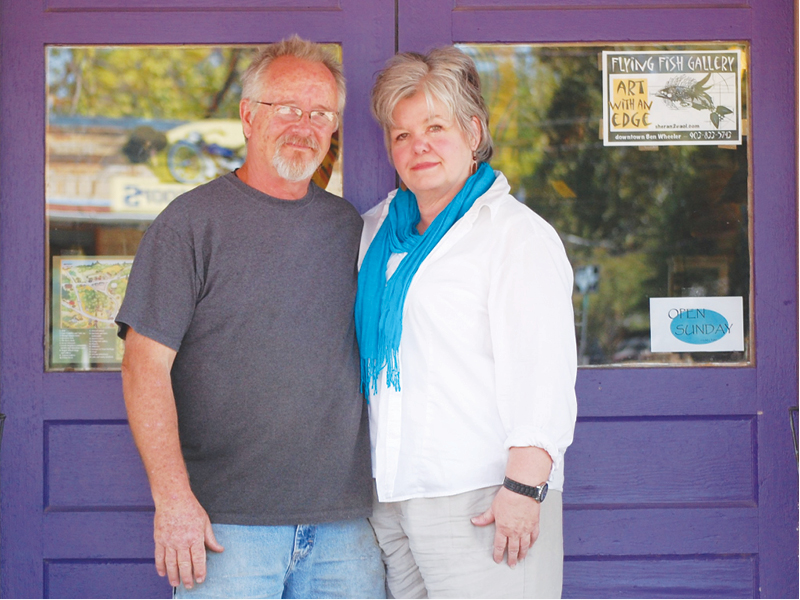By Tom Geddie
At first glance, the colorful clutter of arts and crafts in the Flying Fish Gallery might seem kinda overwhelming. It’s a visual flood of sorts: pottery and paintings, jewelry and fabrics, plants and photography, sculpture and other constructions, and more on shelves, walls, on the floor, and spilling outside the purple doors.
There’s so much to see that it could be overwhelming.
But it’s not, and there’s a reason behind the cornucopia. It’s partly a function of limited space, but even more it’s a function of all the pieces working together like they could in a home or perhaps even in an office. The clutter also, in its way, leads attentive visitors to focus on the various pieces that “speak” to the soul. In bringing ourselves to focus on individual pieces – whichever ones they are, depending on our own backgrounds and tastes – we begin to strengthen our own understanding and appreciation for the individual piece.
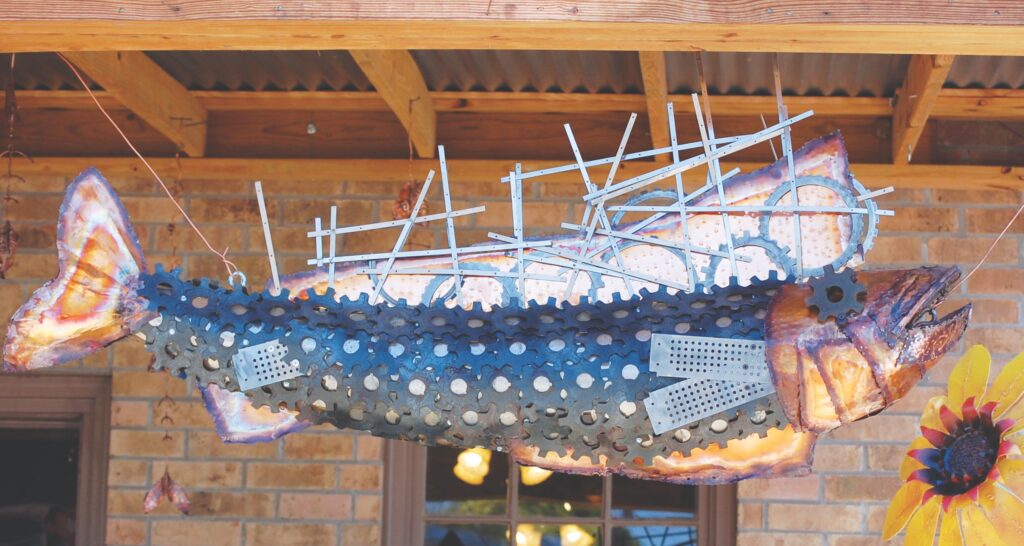
One of Randy Martin’s flying fish. Photo by Tom Geddie
Either the clutter or the feast of colors – or a combination of both – is the first quick impression inside Flying Fish, which in March 2008 was the first retail establishment to open in the still-evolving Ben Wheeler arts and cultural community when developer Brooks Gremmels took a liking to co-owner Randy Martin’s art.
The gallery currently represents 37 artists in many genres.
Studies show that all forms of art can help create personal, emotional experiences, almost like falling in love; in fact, responding to a favorite piece of art can create the same chemical response – triggering dopamine – as love.
Enter Flying Fish – any gallery – and focus in on a piece of art. Don’t get in a hurry. Describe it. Relate that piece of art to your own life in some way. Think about the shapes, the colors, and the rest of the content. Decide what you think the piece of art might be about. Decide what’s memorable about the piece of art, and how it would – or wouldn’t – fit into your own life.
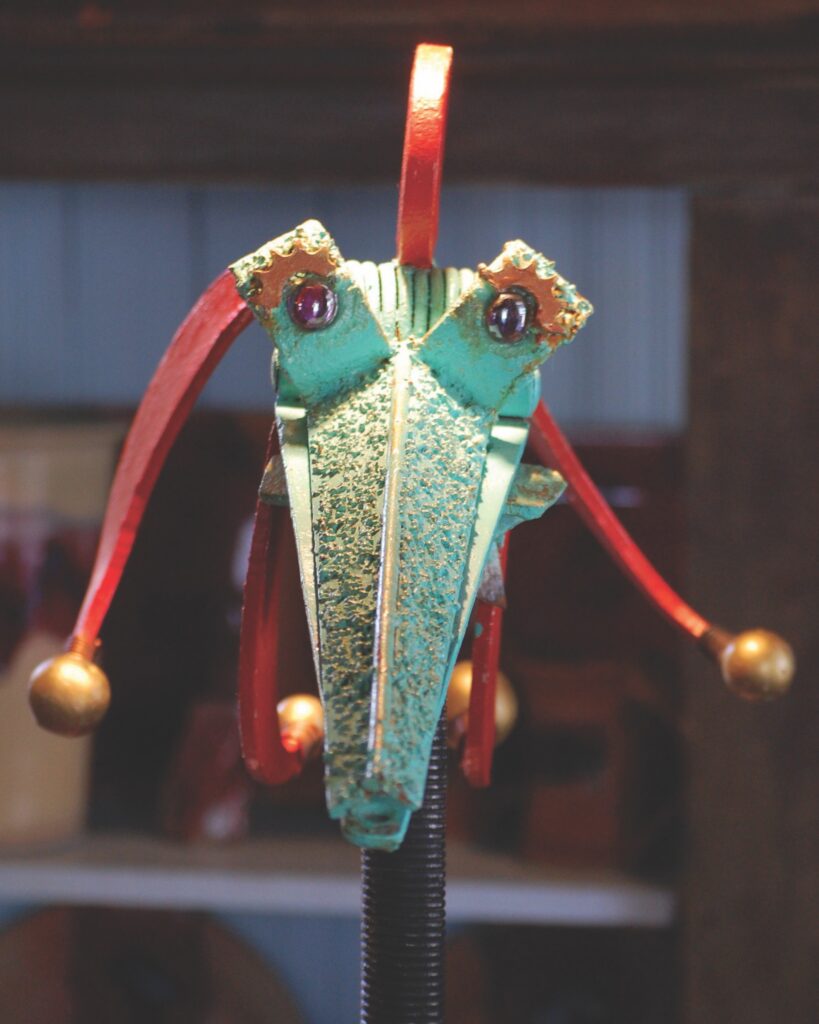
One of Randy Martin’s kinetic metal art pieces. Photo by Tom Geddie
Move on to the next piece that catches your eye, and repeat.
Randy started out 18 years ago building birdhouses with antique doors.
He considers himself an “outside” artist because he has no formal training, and he turned to art full time when his last “day job” ended and he couldn’t find another one.
At one time, he had eight employees working on the birdhouses, and the copper accessories – birdhouse roofs, flowers, feeders, etc. – he built for them evolved into a sideline business and then his primary focus. That, in turn, evolved into sculpture and then, inspired by the movement in scenes of the movie “Twister,” into kinetic sculpture. He took just enough of a trade school welding course to learn how to do what he wanted to do.

A collection of carved fish and boats and stuffed pillows by other artists. Photo by Tom Geddie
Among his sculptures are various representations of fish, hence the gallery name.
“No matter what kind of fish you create, it’s going to represent some kind of weird thing on the bottom of the ocean,” he said. “The flying fish part comes from building fish and putting them on poles and letting the wind spin them around like tops.”
Lately, Randy has been spending more of his creative time on “seeker” steel-stick figures, small dragonfly and butterfly necklaces, and “fishbone” necklaces.
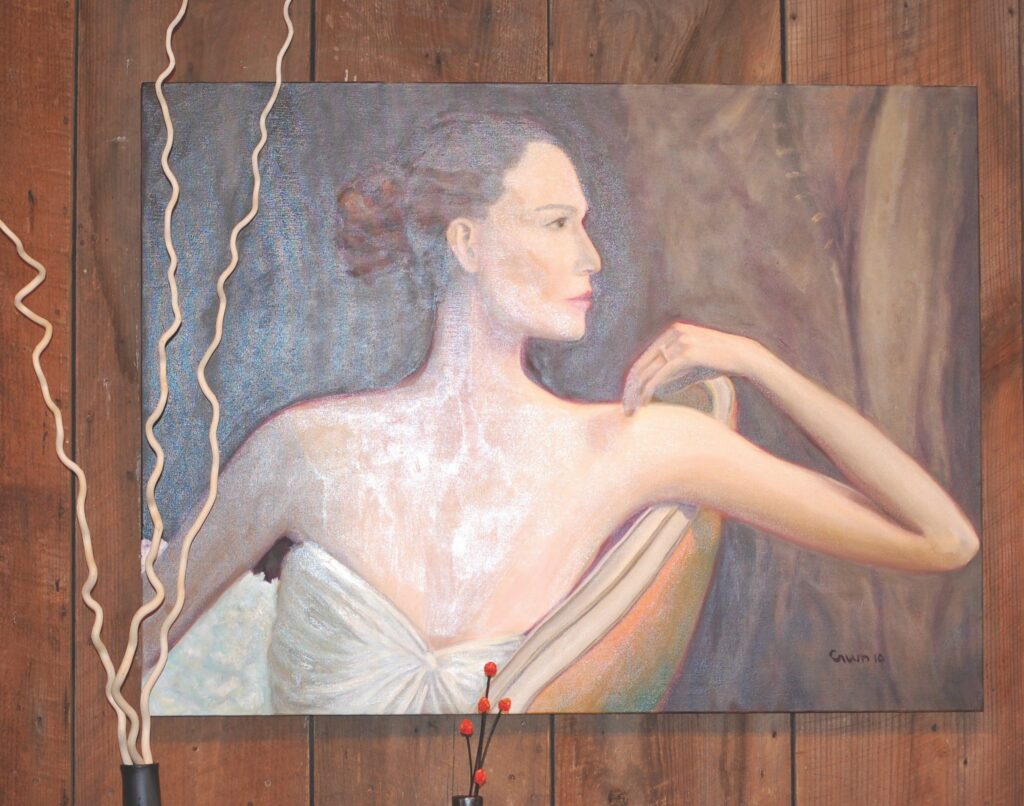
A painting by Terry Crum. Photo by Tom Geddie
His wife and co-owner, Sherri, makes what’s called reclamation art – turning old things intended for one purpose into something very different. For example, she turns old photographs into pop art on wooden boxes and makes llamas, giraffes, horses, and other “animals” out of old doors, using wires, bottle caps, gas spigot handles, and other materials. She also makes masks from erector set parts and chains.
“Artistically, she was always my inspiration because she was so creative with so little,” Randy said. “She’s also an outside artist.”
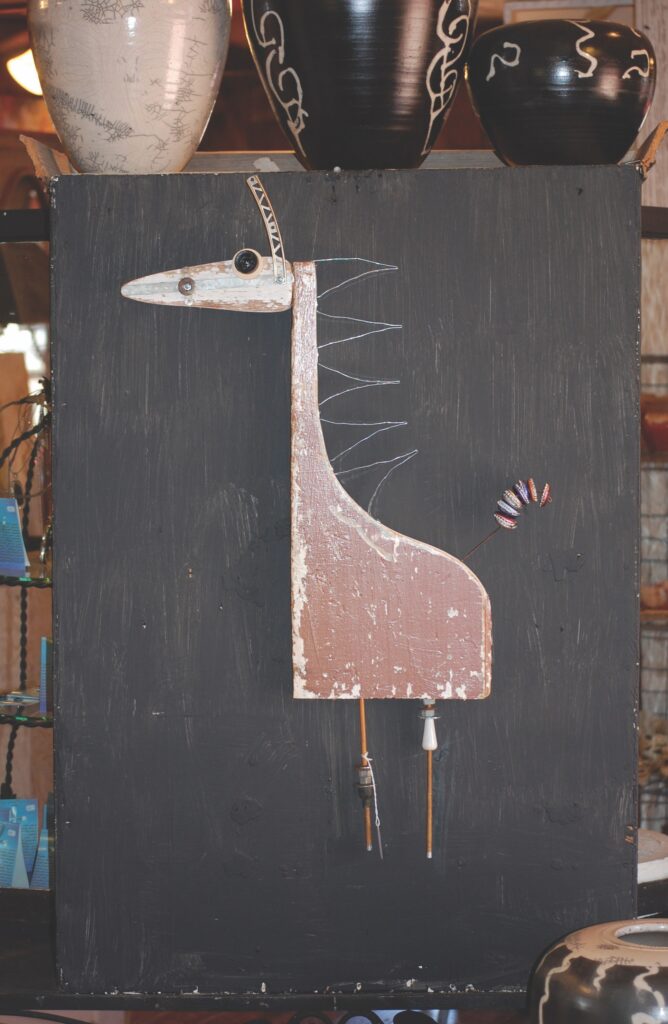
One of Sherri Martin’s creations of reclamation art. Photos by Tom Geddie
The gallery is one culmination of their interests in natural arts.
“When I look at something, I like to see the material that’s being used doing half the work and the artist doing the other half – the natural organic evolution art will do,” Randy said. “The artist is only a partner in the making of art. What he or she is working with is the other half of it.”
Flying Fish also hosts twice-a-month paint-and-wine classes led by Kerian Massey where students learn “not just how to apply paint to a canvas, but also about how much fun it is to apply paint to a canvas.”
In addition, various artists come into the gallery to demonstrate their work and sometimes to lead workshops.
One of the gallery’s goals is to give new artists the basic experience of presenting art to the public and learning how to deal with customers.
“I like it when a new artist comes in very unsure of him- or herself, and is very timid about showing work,” Randy said. “You see the potential, want to represent and encourage them, and see how customers respond. I know the artist is going to be extremely rewarded – not so much monetarily, necessarily – but that somebody is willing to spend money on their art. We love to call the artists when they make their first sale.
“We’re kinda a launching pad for some artists,” he said. “Some have been around for many years, but probably half of our people have never shown before.”
Choosing what to carry in the gallery can be difficult.
“It has to be something that’s not only what we consider highly skilled, but also for the most part unique – something a little different than what you’d see elsewhere,” he said. “We like eclectic things. The whole look of the gallery with all the variety of art we have in here comes from Sherri’s skill of being able to put everything together to make it all look so good. Each piece is helping the piece beside it. That teaches the customer how to put different kinds of art in their own homes, that they don’t have to be single-minded in what they collect.”
Flying Fish Gallery is at 1553 FM 279 in Ben Wheeler. Hours are 11 a.m.-5 p.m. Wednesday and Thursday, 11 a.m.-7 p.m. Friday and Saturday, and 11 a.m.-3 p.m. Sunday. For more information, call 903.833.5743.

